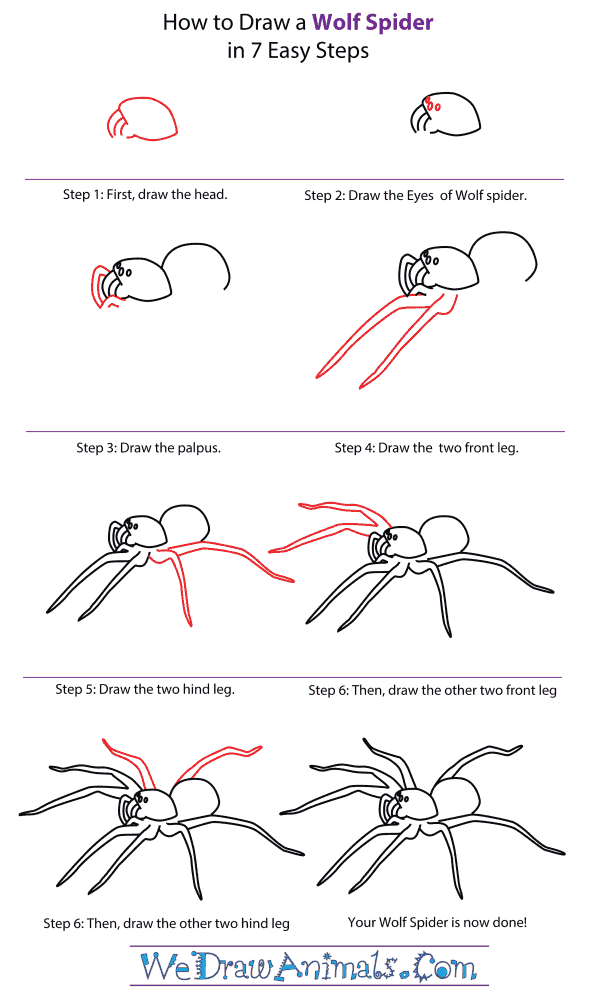In this quick tutorial you'll learn how to draw a Wolf Spider in 7 easy steps - great for kids and novice artists.
The images above represent how your finished drawing is going to look and the steps involved.
Below are the individual steps - you can click on each one for a High Resolution printable PDF version.
At the bottom you can read some interesting facts about the Wolf Spider.
Make sure you also check out any of the hundreds of drawing tutorials grouped by category.
How to Draw a Wolf Spider - Step-by-Step Tutorial
Step 1: Let's draw a wolf spider! Draw a medium-sized semi-circle for the head, but don't make the bottom a straight line! Instead, trace it curved out and then add fangs to the end!
Step 2: Draw three small circles at the front of the face for the wolf spider's eyes.
Step 3: Draw the palpus now by tracing two shapes on either side of the fangs. These shapes are curled in like the fangs!
Step 4: Draw the two front legs now by tracing very long and skinny legs. For the leg that is closest to the back, make sure to have the top part of it just a bit thick.
Step 5: Trace another two long legs at the back for the hind legs, making the leg closest to the front a bit thick at the topl!
Step 6: Next, draw the other two front legs, but make these ones just a bit shorter than the others since they are on the other side of the body.
Step 7: Draw the other two back legs like you did the last two! Here's a tip: make these them a bit wider apart than the rest! You have your wolf spider! Did you know that wolf spiders use camouflage to hide from predators?
Interesting Facts about the Wolf Spider
The Wolf Spider likes to both live and hunt by itself, and it’s pretty good at it, thanks to its keen eyesight. Two of its eyes are bigger and more noticeable than the others. This is one of the major differences between a Wolf Spider and a Nursery Web Spider. A Nursery Web Spider’s eyes are all about the same size.
Did you know?
- Some Wolf Spiders will stalk their prey for short distances, while others will wait patiently for the prey to pass by.
- Wolf Spiders are different from other spiders in that they will carry their eggs around in a large sac that is attached to their abdomens. They have to keep the sacs in a raised position so that they do not drag along the ground, but it does not interfere with their ability to hunt.
- Wolf Spiders use camouflage to protect them against predators. Because of this, their colors usually match those of whatever environment they hang out in most often, which can be in both coastal and inland areas.
Wolf Spiders do have venom, and they will use it if their attacks persistently bothers them. Their bites are not particularly dangerous. At most, they will cause swelling, itching, and a small amount of pain.








